Wedding dresses from around the world that will shock you
18 May 2023Weddings all around the world have two key elements in common: a lifetime promise between the couple, and the significance of making the bride's dress the most stunning item at the event. However, as is always the case, beauty is subjective and appears quite differently depending on the society.
1. India
In India, bridal gowns are no joke. Layered and layered with symbolism, the dress will have sixteen embellishments in total – all considered crucial to ensure a happy marriage. The wedding dress, or sari, is usually red to represent the rising sun.
In addition to everything the bride is already wearing when she arrives, one more feature will be added later in the ceremony: the jaimala, in which the couple place flower garlands on each other in a promise of love.
 @Indian Veil Draping Instructions : Indian Wedding Attire/ehowweddings/YouTube.com
@Indian Veil Draping Instructions : Indian Wedding Attire/ehowweddings/YouTube.com
2. Morocco
The Moroccan wedding ceremony comprises numerous festivities and might last up to a week. The bride and groom first host separate celebrations for their respective families. The legal process is followed by a joint celebration that represents both their marriage and the union of their two families.
The groom and his family carry the bride on a four-legged amariyah to show that they can support her. The bride wears a dress called a takchita.
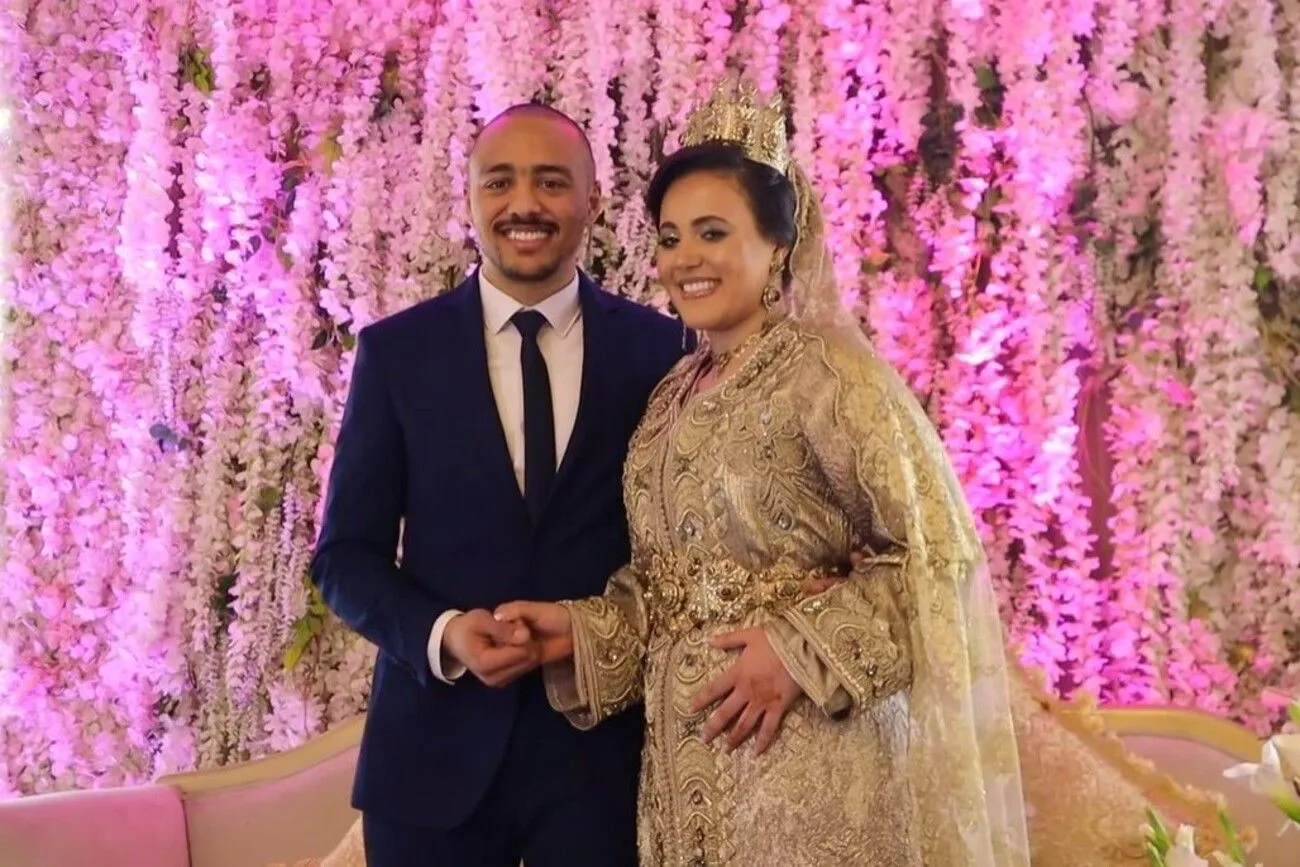 @TRADITIONAL MOROCCAN WEDDING | VLOG/Iman Derder/YouTube.com
@TRADITIONAL MOROCCAN WEDDING | VLOG/Iman Derder/YouTube.com
3. Poland
Nowadays, it is not difficult to find a traditional Polish wedding. The unique veil or cap worn by brides is called a "welon," and it is blessed during the wedding ritual. A flower that matches the bride's bouquet is placed on the groom.
Brides may often move their dresses to cover their husband's shoe throughout the ceremony in the hope that this will establish her as the dominant party. The flower crown is made for the bride in the days leading up to the wedding in order to symbolize a happy, fruitful marriage in Poland, where it is also believed that a bride can die of unhappiness.
 @[deleted]/reddit.com
@[deleted]/reddit.com
4. Sri Lanka
In Sri Lanka, east and west come together in a way that is most obvious during a traditional wedding. Their lengthy lace veils reflect influences from Europe, while their lavishly embroidered silk saris are shared culturally with India and other countries nearby.
The bride will also put on a nalapata as well as a sari and veil. The grooms will dress in a long, white waistcloth known as a mul anduma, a velvet jacket, and a four-cornered hat.
 @SRI-LANKAN WEDDING CEREMONY (FIRST LOVE) *MUST WATCH*/Glambeauty/YouTube.com
@SRI-LANKAN WEDDING CEREMONY (FIRST LOVE) *MUST WATCH*/Glambeauty/YouTube.com
5. Tibet
In Tibet, family elders frequently recommend weddings. An elder from the man's family would visit the other household and bring presents and tea in order to propose a match.
The proposal is accepted by the woman's family if they also accept the gifts. The wedding attire, a headpiece covered in silver coins, and a tiny metal Buddha amulet are then prepared by the groom's family for the bride, which the groom presents to her the day before the wedding.
 @Beautiful Tibetan Wedding/Tibetan Video World/YouTube.com
@Beautiful Tibetan Wedding/Tibetan Video World/YouTube.com
6. Native American Tribes
Every Native American tribe has unique rituals and wedding traditions, yet they all diverge significantly from mainstream wedding conventions. The traditional Native American wedding dress has four colors. Black represents the north, blue represents the south, yellow represents the west, and white represents the east.
The traditional jewelry is typically made of silver and serves a protective function against any bad things that the newlyweds may encounter in the future.
 @What Wedding Dresses Around the World Look Like/Great Big Story/YouTube.com
@What Wedding Dresses Around the World Look Like/Great Big Story/YouTube.com
7. Khazakstan
In traditional Kazakh marriages, the bride dons a "Saukele" headpiece. The most expensive item in each wedding ceremony is this tall, conical hat that is fur-trimmed.
For more affluent women, the top of the hat is frequently embellished with a semiprecious stone, blue velvet, or gold thread. However, ladies from less affluent backgrounds often make their "Saukele" from less expensive materials, like satin, and embellish it with less expensive glass beads.
 @Traditional Kazakh Wedding Dress/HAIR & BEAUTY/YouTube.com
@Traditional Kazakh Wedding Dress/HAIR & BEAUTY/YouTube.com
8. South Korea
The traditional wedding attire for the groom and wife in South Korea is known as a hanbok. The hanbok of the bride consists of a wrapped skirt and chima-jeogori, a short jacket with long sleeves.
The durumagi, or short jacket, and baji, or loose-fitting pants, make up the groom's hanbok. According to an old custom, the groom must carry his wife around a sacred table on his back to symbolize his reliability to the bride.
 @avra_alambil/reddit.com
@avra_alambil/reddit.com
9. Ukraine: Hutsul People
The Hutsul people, who are till adhere to many of their traditions, dwell close to the Romanian and Ukrainian borders. They arrive at the church on horses for their nuptials, which they then celebrate for two or three days in a big wedding tent.
Women in both families work delicately by hand to create their clothes. They only invite an odd number of guests, just like some other civilizations, because they think odd numbers are luckier because they can't be split!
 @Hutsul wedding/Василь Шпитчук/YouTube.com
@Hutsul wedding/Василь Шпитчук/YouTube.com
10. Vietnam
The proposal is where the Vietnamese wedding procedure starts. In order to obtain approval, the bride's family is visited by the family of the groom. In the past, getting married was meant to forge a community-wide relationship between families.
Vietnamese traditional clothing has always varied depending on the region and the occasion, therefore wedding attire varies in style. Vietnamese weddings, both domestically and abroad, continue to use the Nguyen Dynasty's renowned fashion tradition. Some couples even change the layout to suit their preferences.
 @Sam + Mat Traditional Vietnamese Wedding Video/RCG VISUALS/YouTube.com
@Sam + Mat Traditional Vietnamese Wedding Video/RCG VISUALS/YouTube.com
11. Japan
There are numerous phases to a traditional Japanese ceremony. Each family has prepared a portion of the bridal dress for the other family, and the event starts with a meal for the two families to exchange gifts.
The bride will receive a bridal sash from the groom's family to wear over an obi, a white kimono. The groom will receive a pair of pleated pants called hakama and a jacket called a haori from the bride's family to wear over his typically black kimono.
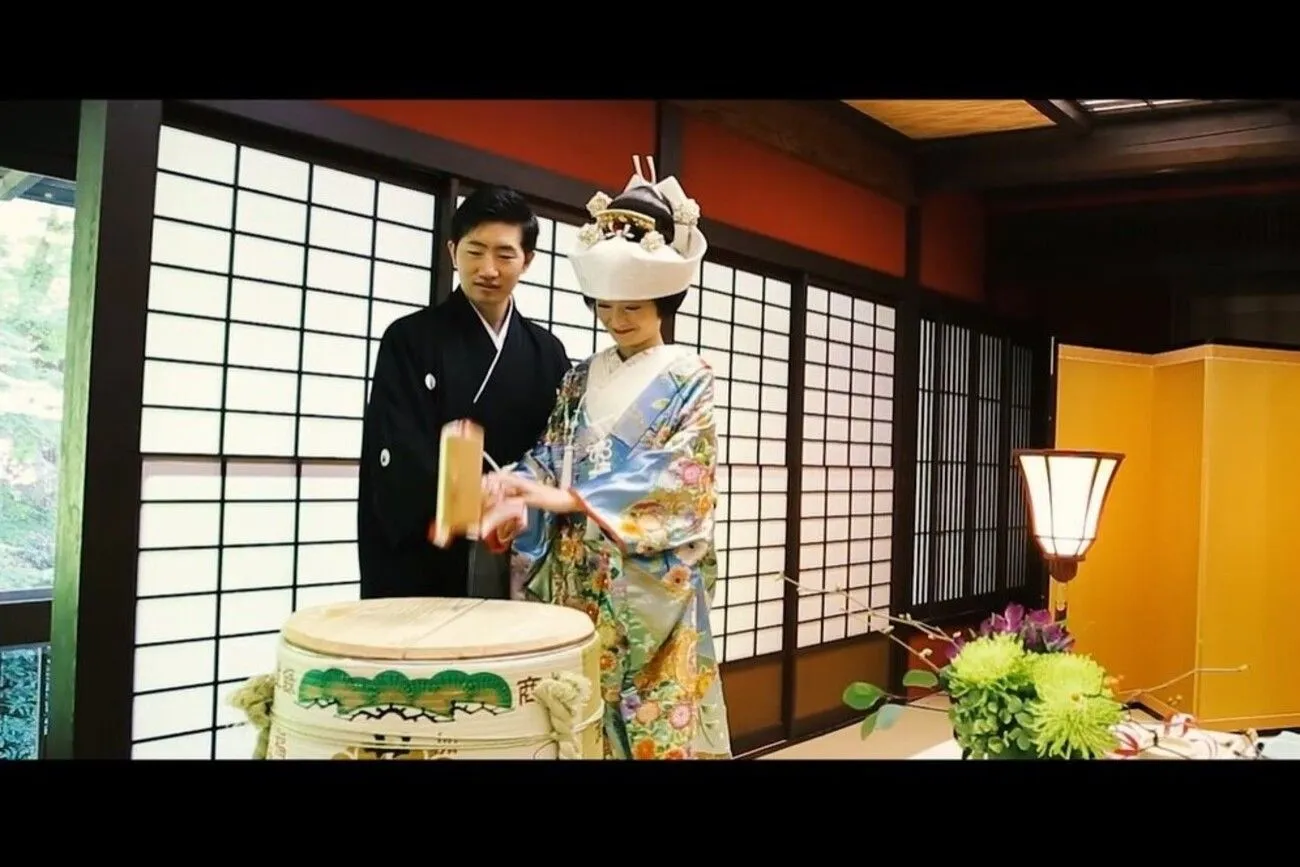 @A Traditional Japanese Wedding Ceremony「Hanayome Noren」/nigoten2510movie/YouTube.com
@A Traditional Japanese Wedding Ceremony「Hanayome Noren」/nigoten2510movie/YouTube.com
12. Scandinavia: Sami People
Despite being split up into several nations today, Scandinavia's many areas have a lot in common historically and culturally. Sami, however, is one of those cultures that has persisted the longest.
The Kola Peninsula, sections of Norway, Sweden, and Finland, as well as the far north of Scandinavia, are home to the Sami people. This area is home to native reindeer, which the Sami are renowned for managing. Their traditional attire conveys a variety of information about the wearer, including their marital status.
 @DeliciousCabbage22/reddit.com
@DeliciousCabbage22/reddit.com
13. Ghana
There isn't much privacy when a man proposes to a woman in Ghana. Visit her home to make the proposal, bringing his entire family along. He'd best hope she says yes, or else it might get awkward. Ghanaian couples typically coordinate their ceremonial clothes.
The clothing will be woven by hand in Ghana from a material called kente, and it is traditional for it to have elaborate geometric patterns and vivid, vibrant patterns. These distinctive costumes ought to highlight the couple's distinctive love.
 @Ghanaian traditional wedding Lloyd & Louisa/Louisa Fofie/YouTube.com
@Ghanaian traditional wedding Lloyd & Louisa/Louisa Fofie/YouTube.com
14. Romania
An important occasion in the region of Northwest Transylvania is weddings in Oas. The parents, along with the future bride and groom, plan the wedding. A number of rites are performed, such as preparing the dowry, selecting the godparents, and making the clothes.
The "fotă" is the customary bridal skirt, which is often made of cotton or wool, and the "maramă" is the distinctive hat that every lady is required to wear throughout the wedding procession. She frequently wears a range of vibrant beads as well.
 @TRADITIONAL Romanian Wedding/Wonderfully Made Visuals/YouTube.com
@TRADITIONAL Romanian Wedding/Wonderfully Made Visuals/YouTube.com
15. Hungary: Matyo People
A subgroup of Hungarians known as the Matyo has lived in northern Hungary for many generations, maintaining their culture despite several political and cultural changes in the area. "You're no Matyó embroidery!" is a common phrase in Eastern Europe.
This came about as a result of people's enthusiasm for the Matyo's beautiful and perfect stitching. The garment has a lot of florals since they symbolize fertility. In order to represent both this and the new family's prosperity and good fortune, wheat is braided into the headdress.
 @Hungarian wedding traditional and modern days 1/2/Zoltán Piszár/YouTube.com
@Hungarian wedding traditional and modern days 1/2/Zoltán Piszár/YouTube.com
16. Philippines
The Philippines' Basilan island is home to the majority of the Yakan ethnolinguistic group. Two ceremonies are often held during a traditional wedding: an earlier, pre-Islamic ritual and an Islamic ceremony. The parents plan the weddings, and for the ceremony, the bride and groom both don face paint.
Non-Islamic families, on the other hand, typically adhere to a more conventional Catholic wedding style. This also comprises a veil for the bride and a '8'-shaped rope that the bride and groom both wear around their heads as a symbol of infinity.
 @Most Beautiful Traditional Wedding Dresses Around The World/Traditional clothes/YouTube.com
@Most Beautiful Traditional Wedding Dresses Around The World/Traditional clothes/YouTube.com
17. Gora
What, you've never heard of Gora? Not to worry. It's not a nation; it's an area. You'll be surprised with its bridal gowns though. The Gorani people, who are nomadic and of Slavic descent and who practice Islam but who also maintain some of the rituals and traditions of the region's pre-Christian pagan past, have long lived in Gora, which is situated between Kosovo and Albania.
The bride is transported to the home of the husband's neighbor, who hosts the wedding, on a white horse that has been decked with an umbrella and a custom scarf. Their weddings last three days.
 @Experts recreate wedding tradition tucked away in remote mountain area/AP Archive/YouTube.com
@Experts recreate wedding tradition tucked away in remote mountain area/AP Archive/YouTube.com
18. Traditional Celtic Dress
Celtic wedding rituals and customs have their origins in open springs. Location has always been important when organizing a Celtic wedding, even now. Many weddings in the British Isle region focus heavily on clothing.
Even though groomsmen may not wear kilts, they will almost certainly wear vests or sashes made of the same material because kilts are still widely used and Scots naturally desire to wear their family's plaid. After the bride and groom exchange rings, it's customary in Scottish weddings for the husband to present a piece of his family's plaid to the bride to wear as a pin.
 @Planning a Celtic Wedding with Scottish, Irish and Kilt Traditions/USA Kilts & Celtic Traditions/YouTube.com
@Planning a Celtic Wedding with Scottish, Irish and Kilt Traditions/USA Kilts & Celtic Traditions/YouTube.com
19. Mongolia
In Mongolia, the bride and groom must travel together to the groom's home to request permission before getting hitched. They will then be in charge of organizing the wedding if they accept.
The bride and groom don "deels," or patterned clothing, at traditional Mongolian weddings. Although the term "deels" refers to Mongolian apparel generally and includes a lot of ordinary clothes, historically, deel garbs have been manufactured specifically for special occasions like weddings and holidays.
 @Mongolian Traditional Wedding - Must See Event In Mongolia! Nomad Culture | Views/ARTGER/YouTube.com
@Mongolian Traditional Wedding - Must See Event In Mongolia! Nomad Culture | Views/ARTGER/YouTube.com
20. Tonga
Engagement begins with a somewhat uncommon initial step in the isolated island culture of Tonga: friendship. The prospective groom must persuade his future wife to accept his hand in friendship, or fai kaume, before any formal dating may take place.
Having persuaded her, he must now persuade her parents that he is deserving of an engagement by visiting her home and requesting their consent to see her on a regular basis (a process known as faitohi). There will be a significant celebration before the wedding called a fakalelea if all goes as planned and they get engaged.
 @Bridal Preparation of 'Iolani Koka ~ Beautiful Tongan Wedding Attire/Paula Moimoi Latu/YouTube.com
@Bridal Preparation of 'Iolani Koka ~ Beautiful Tongan Wedding Attire/Paula Moimoi Latu/YouTube.com
21. Spain
The mother of the bride will have her daughter's mantilla, a lace headgear that is part of the customary Spanish wedding attire, embroidered. The peineta, a tall comb, is covered by a mantilla, a lace veil. Some brides opt to place the mantilla straight on their hair without the peineta.
Typically, the bridal gown will include delicate lace accents, a lace neckline, and sleeves. Mantillas are typically fashioned of black lace, despite the fact that most brides wear white lace.
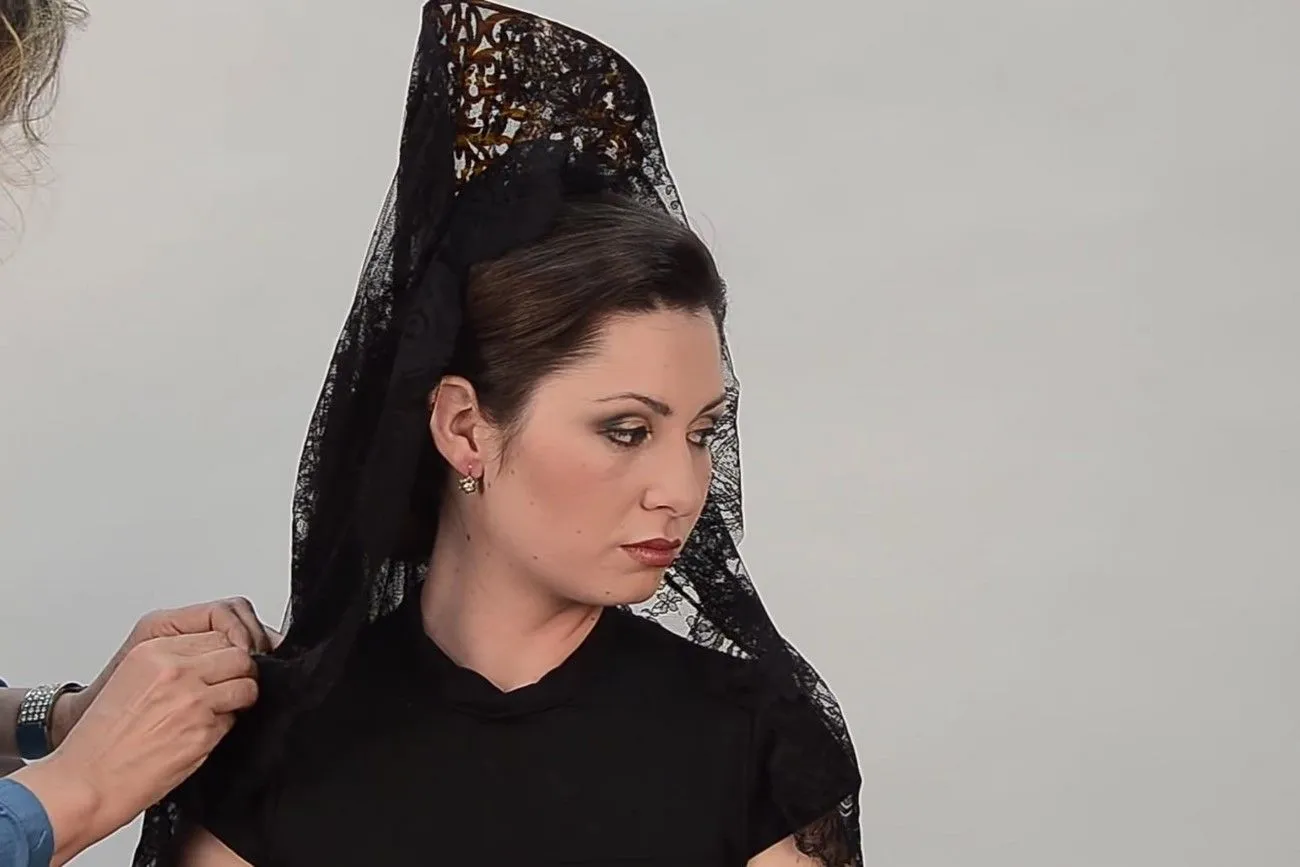 @Cómo poner una mantilla española en 7 minutos/carmelamartin100/YouTube.com
@Cómo poner una mantilla española en 7 minutos/carmelamartin100/YouTube.com
22. Turkmenistan
The bride in Turkmenistan traditionally wears a crimson dress made of homemade silk that is embellished with silver or gilded pendants for the wedding ceremony. The bride is expected to keep quiet and avoid interacting with her groom throughout the day.
She must also display her piety by wrapping a scarlet scarf around her mouth. The bride should keep her eyes on the ground and avoid making eye contact with anyone.
 @TURKMEN WEDDING-TURKMEN CLOTHES-TURKMEN TRADITIONS/Borna Seyyahe/YouTube.com
@TURKMEN WEDDING-TURKMEN CLOTHES-TURKMEN TRADITIONS/Borna Seyyahe/YouTube.com
23. The Amish Wedding Dress
Different Amish villages may have different wedding attire. The brides in some Amish communities dress in a black gown with a white apron and cape. In certain cultures, the bride gets to pick the color of her gown while donning a white cloak and apron.
While some brides sew their own dresses, others have their moms or other close female friends do it. Many unique traditions practiced by Swiss Amish are unheard of in non-Swiss groups.
 @15 Things Amish Women DON'T Want You To Know/Boggled/YouTube.com
@15 Things Amish Women DON'T Want You To Know/Boggled/YouTube.com
24. Malaysia
In Malay weddings, the bride wears a sarong over a long dress called a baju kebeya, and the groom wears a long sleeved shirt and pants called a baju melayu. They are frequently embroidered with lovely gold thread and available in a variety of vivid and lovely colors. Intricate fabrics are used to wrap their heads as well.
The couple visits the houses of both the bride and the groom during the two-day bersanding ritual, where they sit on adorned thrones and are showered with blessings, gifts, yellow rice, and flower petals (a symbol of fertility), before the legal union. The bride then serves her husband a meal, known as makan berdemai, for the first time.
 @#5: Traditional Malay Wedding! Off The Beaten Path in Rural Malaysia/Tattle/YouTube.com
@#5: Traditional Malay Wedding! Off The Beaten Path in Rural Malaysia/Tattle/YouTube.com
25. Scotland
The question "An nglacfaidh t liom mar chéile?" The phrase "Will you marry me" is in Scottish Gaelic. Scottish guys wearing skirts is not exactly what it sounds like, despite what you may have seen or heard.
Kilts, or wait-wrapped clothing, were common in Scotland and featured the colors and crests of the clan the wearer was born into. Men in Scotland typically don their clan's kilt on their wedding day. Following the wedding, the bride is given a shawl in the clan's colors by the groom's family to symbolize her adoption into their clan.
 @Traditional Scottish Wedding in Bath/The Wedding Filmmakers/YouTube.com
@Traditional Scottish Wedding in Bath/The Wedding Filmmakers/YouTube.com
26. Bhutan
Tourists have started to enjoy attending Bhutanese weddings in recent years. A wedding in Bhutan involves much more than just exchanging vows and rings. The marriage symbolizes the importance of the relationship between a husband and wife.
Buddhist monks execute a number of religious procedures during a traditional Bhutanese wedding. The bride wears a kira with a scarf, and the man dons a gho, both of which are customary bridal clothing.
 @Traditional Tamang Wedding | My Best Friend Got Married | She Got Emotional 😭 #chardam |Indo-Bhutan/Mingma Hyolmo/YouTube.com
@Traditional Tamang Wedding | My Best Friend Got Married | She Got Emotional 😭 #chardam |Indo-Bhutan/Mingma Hyolmo/YouTube.com
27. Nigeria
Nigeria is a large country with almost 250 different ethnic groups representing a variety of religions and ethnic origins, therefore wedding rituals might vary greatly from one location to the next.
But one characteristic is consistent across almost all of these regions: across the majority of Nigeria, brides will dress in vibrantly colored wedding attire and accessorize with a distinctive headband known as a gele. In Nigeria, brides and grooms typically match the colors of their wedding attire, as is the practice in many African cultures.
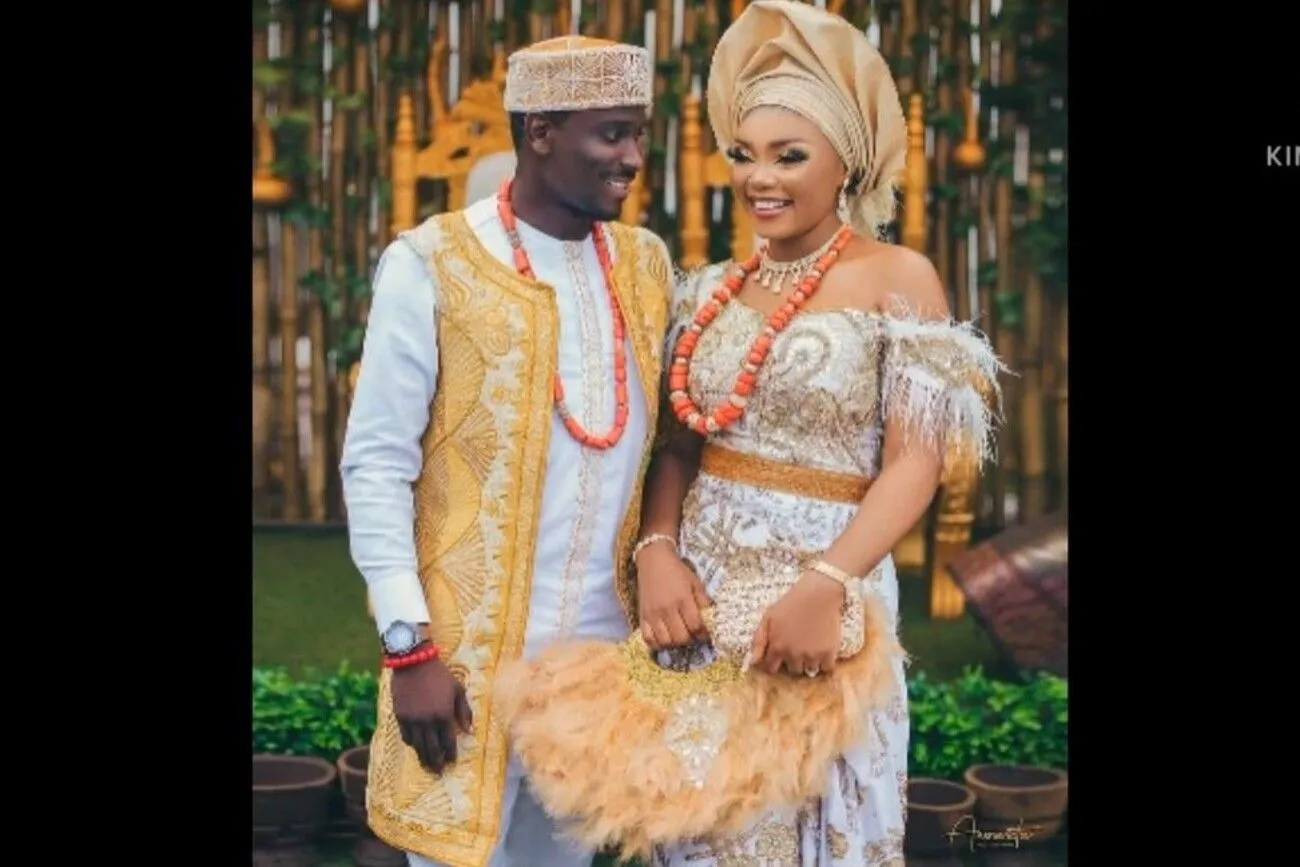 @CUTE NIGERIAN TRADITIONAL WEDDING DRESSES #WOMEN CLOTHING STYLES #AFRICAN FASHION/AfriFashion TV/YouTube.com
@CUTE NIGERIAN TRADITIONAL WEDDING DRESSES #WOMEN CLOTHING STYLES #AFRICAN FASHION/AfriFashion TV/YouTube.com
28. Sardinia
Sardinian weddings are vibrant, joyful events. Sardinians believe that weddings are once-in-a-lifetime occasions, thus they should be special. The wedding in Sardinia is an occasion for the locals to display their culture, and it is as colorful and filled with customs as the wedding itself.
"Sa Razzia," a meal of rice, wheat, salt, money, and rose petals, is one of the most popular customs. It is broken close to the door of the bride and groom's residence.
 @aleevad/reddit.com
@aleevad/reddit.com
29. Fiji
Fijian traditional weddings are quite the sight, and most of the local villagers frequently participate. The bride's attire is made from the mulberry tree's bark, which is simply compressed into a light yet sturdy material that is then used to make the dress.
Tapa is the material's official name, and Polynesia as a whole loves it. Additionally, the bride will don a traditional Tapa jewelry, and the outfits frequently feature long trains.
 @A Fijian Wedding./The Pale Blue Dot/YouTube.com
@A Fijian Wedding./The Pale Blue Dot/YouTube.com
30. Java
A blangkon for the groom and a selendang for the bride are typical Javanese headdresses worn at weddings in addition to a customary sarong. A procession known as a hajatan is part of the wedding preparations and is meant to fend against unfavorable marital outcomes.
Then, in a ritual known as siraman, the bride and groom are sprinkled with water by their seven closest friends. After that, the father places an umbrella over the mother's head to represent the collaboration that makes marriages successful as the mother serves a treat called “dawet.”
 @Javanese Traditional Wedding Dress/TANTRA PHOTO/YouTube.com
@Javanese Traditional Wedding Dress/TANTRA PHOTO/YouTube.com
31. Pakistan
The bride and groom are always addressed to as "boy" and "girl," regardless of how many decades or how few they are in age, according to a very old tradition at Pakistani weddings.
The bride's friends and family rub oil and turmeric on her hands and face on the day of the wedding's celebrations. It's said to make her look stunning and glowing the next day.
 @BEAUTIFUL Pakistani Wedding in the Mountains (Super Rare)/Eva zu Beck/YouTube.com
@BEAUTIFUL Pakistani Wedding in the Mountains (Super Rare)/Eva zu Beck/YouTube.com
32. Kenya
The bride must wear a striking necklace composed of beads and shells in a Maasai wedding. A gathering known as the "kupamba" takes place the night before the wedding. The bride is permitted to remove her veil during this party and display her hairstyle and jewelry.
Prior to the wedding, the woman has her head shaved as a representation of her new life following the union. The woman is supposed to bring whatever she needs to the wedding.
 @Luo traditional wedding | Nyombo | Achieng + Gunars | Kisumu Kenya/Molvine Rayolah/YouTube.com
@Luo traditional wedding | Nyombo | Achieng + Gunars | Kisumu Kenya/Molvine Rayolah/YouTube.com
33. Germany
Traditional bridal headdresses in Germany differ from area to region. While the emphasis in Buckenburg is more on flowers than beads, the headpiece in the Black Forest valley is huge and covered in hundreds of beads and glass balls.
However, the majority of traditional weddings are focused on the customs that are followed both before and after the ceremony. This includes a night when shattering porcelain is encouraged because it is regarded as a lucky charm. Additionally, brides frequently choose simple white dresses with modest trains.
 @Morav_123/reddit.com
@Morav_123/reddit.com
34. Indonesia
The majority of Indonesian weddings, spanning many regional subcultures, contain a lot of gold, notably on headdresses and jewelry from head to toe, making the bride and groom practically sparkle all over their bodies. This is similar to the architecture in the area.
The architecture of the area makes it clear that Indonesian emperors enjoyed a good amount of splendor and wealth in the area, as seen by the numerous monuments with gold decorations. The bride and groom respect Indonesia's past and its kings and queens by donning gold.
 @What Wedding Dresses Around the World Look Like/Great Big Story/YouTube.com
@What Wedding Dresses Around the World Look Like/Great Big Story/YouTube.com
35. Myanmar
The traditional Burmese dress for brides is called Htamein. It is a long, wrap-around skirt that is tied at the waist. The fabric is often richly embroidered or adorned with intricate patterns, reflecting the cultural aesthetics. Most often, the newlyweds choose the color of their wedding attire - red and gold or their shades. Red symbolizes love and prosperity, while gold represents wealth and purity.
 @Traditional WEDDING Dresses from ASIA (1080p)/COUNTRY’s Competition/YouTube.com
@Traditional WEDDING Dresses from ASIA (1080p)/COUNTRY’s Competition/YouTube.com
36. Samoa
In traditional Samoan society, status is extremely important, hence people typically marry within their social class. But after a wedding date is selected, both families contribute equally to the cost of the nuptials.
Following the ceremony, the reception is held, and the bride entertains the guests with a taualuga, a traditional Samoan dance. To prepare for their wedding day, Samoan girls begin learning this dance at an early age. Food may be served to the guests after the dance.
 @Traditional Samoan Wedding Dance (AMAZING FIRST DANCE SIVA)/The Atonio's/YouTube.com
@Traditional Samoan Wedding Dance (AMAZING FIRST DANCE SIVA)/The Atonio's/YouTube.com
37. Saudi Arabia
Culturally speaking, Saudi Arabian weddings are a big event. The celebration combines an opulent fashion display with a bachelorette party rather than a religious ceremony. Normally, the visitors show up at 10:00 pm. While the women wait for the bride in one ballroom, the males hang out with the groom in another.
Saudi Arabian weddings take place in relatively private and intimate settings because they are always segregated in public places.
 @Traditional Arabic Wedding Dresses 2016/fashion butterfly9/YouTube.com
@Traditional Arabic Wedding Dresses 2016/fashion butterfly9/YouTube.com
38. Peru
An important theme during a wedding in Peru is color. Men don headdresses, while women don polleras, colorful handwoven skirts. Both the bride and the husband will furthermore don cloaks or ponchos.
These ornaments and fashions are reminiscent of the mighty Incan empire, which formerly ruled over this area and others, with its capital at Macchu Picchu in the Peruvian mountains. Peruvians even garnish their cakes with ribbon-hidden rings and clothing-coordinating decorations.
 @Traditional wedding dresses from around the world | How wedding outfits around the world look like/SHOP FESTIVE/Barong Tagalog/YouTube.com
@Traditional wedding dresses from around the world | How wedding outfits around the world look like/SHOP FESTIVE/Barong Tagalog/YouTube.com
39. Zulu Tribe in South Africa
They are renowned to be lively musical, colorful, and filled with dancing and feasting, just like any other African wedding. A Zulu wedding, however, takes the cake for appeal, splendor, and grandiosity. The bride is decorated with white and red ochre on the wedding day, and sacks of stones are tied to her feet to contribute to the beat while she dances.
She covers her head with a goatskin scarf, ties oxtail fringes around her arms and knees, and wears a veil fashioned of beads and twisted fig branches. The dance-off between the families of the bride and the groom is the ceremony's high point.
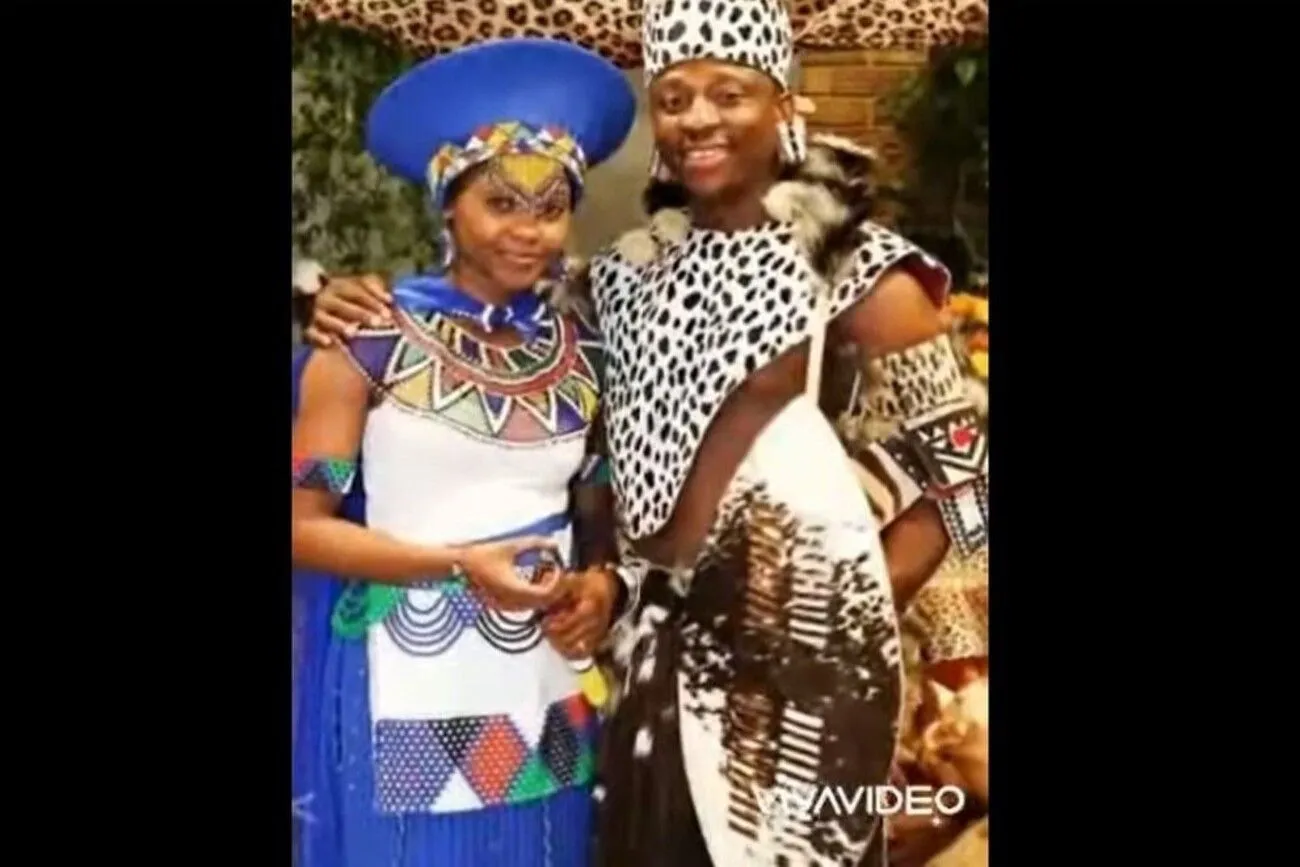 @10 SOUTH AFRICAN ZULU TRADATIONAl WEDDING ATTIRE THAT YOU MUST WEAR#tradationalwedding2021/Wedding Ideas Official/YouTube.com
@10 SOUTH AFRICAN ZULU TRADATIONAl WEDDING ATTIRE THAT YOU MUST WEAR#tradationalwedding2021/Wedding Ideas Official/YouTube.com
40. China
As red is seen as lucky in Chinese culture, brides and grooms frequently choose red clothing for traditional weddings. It symbolizes love and wealth and drives away evil spirits.
They are dressed by their individual families, as in many other cultures. The bride's chosen bridesmaids will then obstruct the groom from entering the bride's family home. After she gives the go-ahead, the families come together for a tea ceremony.
 @Chinese Traditional Wedding Dress|Couple Hanfu|Beautiful Chinese Tradition/Across the Globe/YouTube.com
@Chinese Traditional Wedding Dress|Couple Hanfu|Beautiful Chinese Tradition/Across the Globe/YouTube.com
41. Papua New Guinea
Before the wedding ceremony, a husband is still expected to pay the bride price in some areas of Papua New Guinea. This is sometimes compensated by golden-edged clamshells. In some instances, an endowment is due in its place.
Weddings are also a must for wearing dressy attire and a fantastic chance to flaunt glittering accessories like seashells and bright face paint. The bride typically covers her body with mud or clay in some regions and wears open-sided, coloured grass aprons.
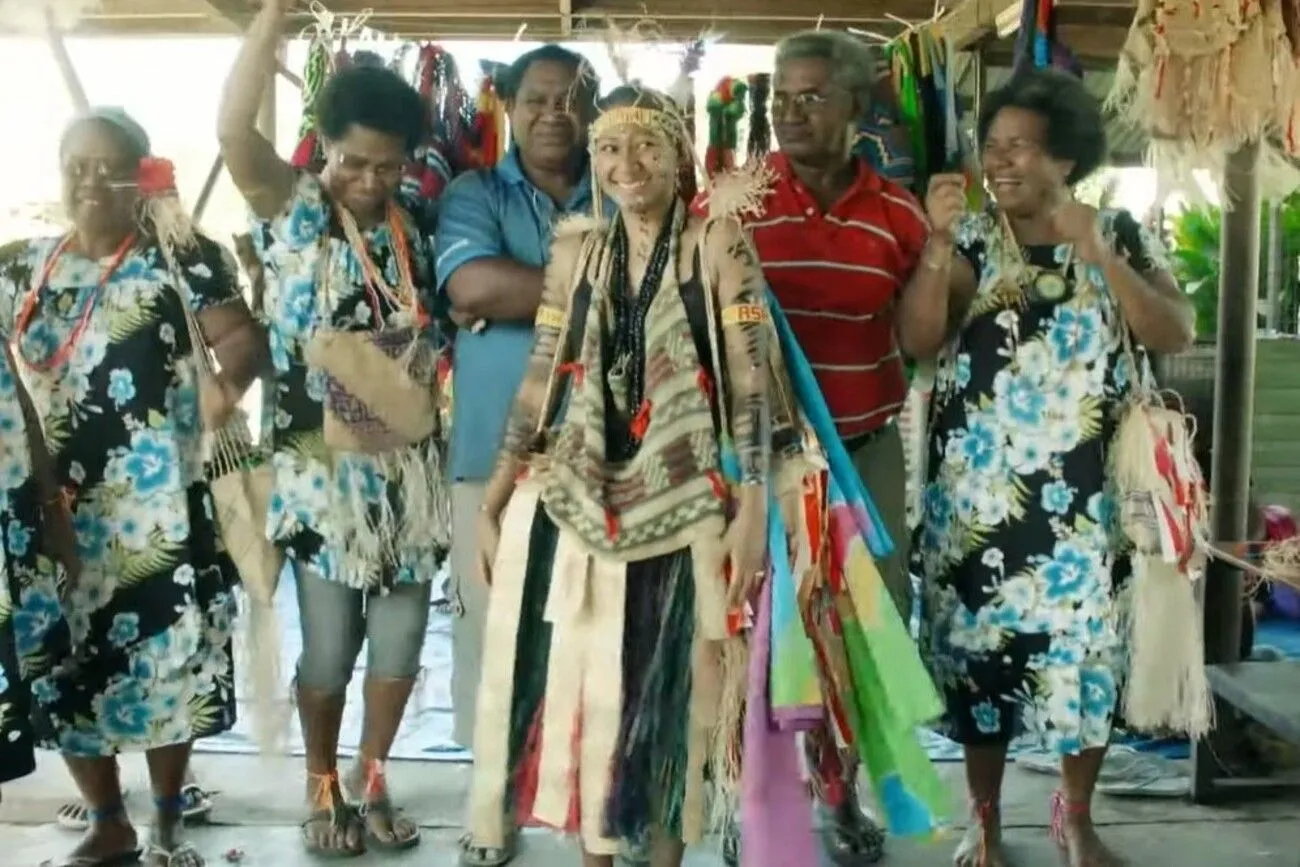 @Lamur- Temu Brideprice Ceremony (Traditional Wedding) | Kokopo | Papua New Guinea/Margherita & Warren Lamur/YouTube.com
@Lamur- Temu Brideprice Ceremony (Traditional Wedding) | Kokopo | Papua New Guinea/Margherita & Warren Lamur/YouTube.com
42. Greece
Ancient paganism and Greek Orthodox church customs are merged at Greek weddings. Older custom dictates that the bride's relatives stuff a gold coin into the inside of her shoe to bring luck, and a lump of sugar into her glove to assure a sweet life.
A bit of iron is placed in the groom's pocket as protection against evil spirits during the day. On the couple's heads, a priest installs crowns (called stefana) that are connected by a ribbon and symbolize their new union.
 @Greek girls Wedding Tradition & Dance from Central Greece , Thessaly/HellenicGreekBeauty/YouTube.com
@Greek girls Wedding Tradition & Dance from Central Greece , Thessaly/HellenicGreekBeauty/YouTube.com
43. Yemen
The bride dons customary jewelry and an extravagant hat embellished with flowers and gems for a typical Yemenite Jewish wedding. These are supposedly good luck charms. Her clothing is also made of gold threads, and wedding ceremonies typically run between five and seven days.
Like Hindu brides, a bride is traditionally required to have henna applied on her hands. Additionally, the bride is typically confined to her parents' house while getting ready for the wedding.
 @Traditional Yemeni Wedding | زفاف يميني تقليدي | تعز | חתונה תימנית מסורתית/تونس الشامي/YouTube.com
@Traditional Yemeni Wedding | زفاف يميني تقليدي | تعز | חתונה תימנית מסורתית/تونس الشامي/YouTube.com
44. Portugal
Traditional Portuguese weddings incorporate both ancient paganism and somewhat more modern Catholic principles. The brides typically don a full-length tunic that covers them from head to toe and is heavily jeweled.
This jewelry draws inspiration from a number of various cultures, including Moorish beads, Christian crosses, and gold to symbolize the wealth of the long line of Portuguese kings. These priceless ornaments used to be given to the groom's family as a dowry.
 @Arsehole_Diplomacy/reddit.com
@Arsehole_Diplomacy/reddit.com
45. Brunei
In Brunei, traditional wedding attire is a reflection of the country's rich cultural heritage, influenced by Islamic traditions and the Malay community. The wedding attire for both the bride and groom is intricate, symbolic, and often colorful. The traditional wedding attire for Bruneian brides is known as "baju kurung." The bride wears a long silver dress adorned with sequins and beads. A gray-colored veil with a massive tiara covers her entire head. In turn, the groom wears a golden polka-dotted suit. The groom's traditional attire is called "baju Melayu." The groom is cinched with a wide belt, and a special shawl in harmony with the attire is wrapped around his head in a circular manner.
 @Traditional wedding dresses from around the world | How wedding outfits around the world look like/SHOP FESTIVE/YouTube.com
@Traditional wedding dresses from around the world | How wedding outfits around the world look like/SHOP FESTIVE/YouTube.com
46. Cambodia
The traditional Cambodian wedding dress for brides is called "samonos." It is a two-piece ensemble consisting of a blouse (brocade or silk) and a long skirt. The samonos is often richly embroidered with intricate patterns and may be adorned with sequins or pearls. Traditional Cambodian jewelry, such as gold necklaces, earrings, and bracelets, is an integral part of the bride's attire. These pieces are often passed down through generations and may carry sentimental value. The groom's attire usually consists of a traditional shirt known as "achkan" or "chang pao". The shirt is often long-sleeved and may have intricate embroidery.
 @Traditional wedding dresses from around the world | How wedding outfits around the world look like/SHOP FESTIVE/YouTube.com
@Traditional wedding dresses from around the world | How wedding outfits around the world look like/SHOP FESTIVE/YouTube.com
47. Iraq
In Iraq, rose water, cordial, and sweet Arabic coffee are used to accept marriage proposals. Iraqi marriages can last up to many years before the event even takes place, and the ceremony itself can last up to seven days.
The bride will receive gifts from both families leading up to the wedding week, including numerous outfits in a variety of hues. She will next wear a different color for each of the rainbow's seven colors on each of the following seven days.
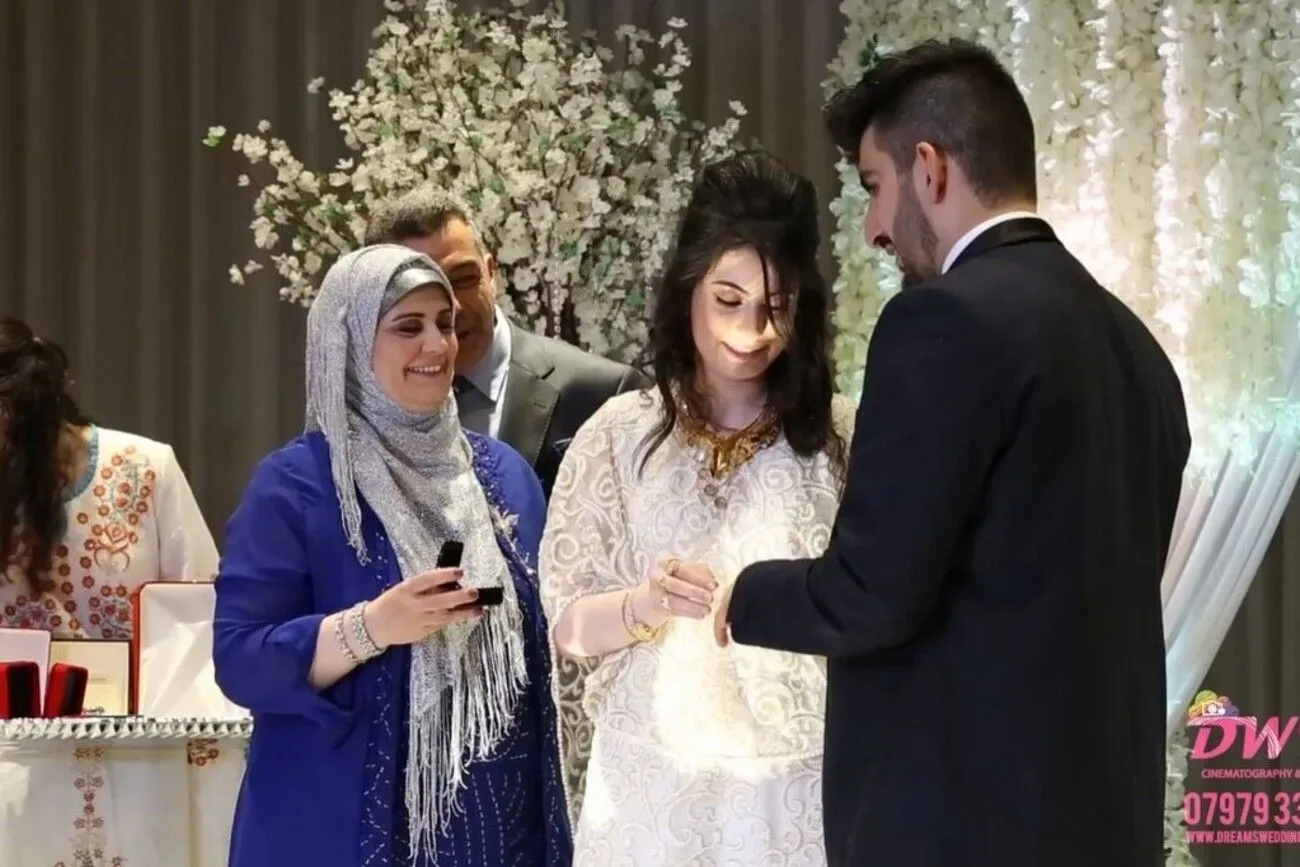 @Iraqi wedding ! Monketh & Dilal Highlights !Cinematic/DreamsWedding Newcastle/YouTube.com
@Iraqi wedding ! Monketh & Dilal Highlights !Cinematic/DreamsWedding Newcastle/YouTube.com
48. Uzbekistan
Weddings in Uzbekistan take place after an engagement ceremony called a Fatikha-Tui. It is carried out with the consent of the parents of the bride and groom. In a ceremony known as sindirish, the bride's parents will break bread together if they agree, signifying the engagement of the daughter. The entire wedding is then funded by the groom's family.
On the wedding day, the guys start the festivities early by dancing on stilts and blowing two-meter-long horns. The groom and his male party depart for the bride's house in the afternoon with song and dance, arriving there to be showered with flowers.
 @Uzbekistan! ORIENTAL WEDDING! The bride blew me away with HER BEAUTY! Iranian TRADITIONS! Tandoor
@Uzbekistan! ORIENTAL WEDDING! The bride blew me away with HER BEAUTY! Iranian TRADITIONS! Tandoor
/В путь. On the way/YouTube.com
49. Caucus Mountains, Georgia
Wedding traditions in Georgia's Caucus Mountains haven't changed much throughout the years. Many of their customs are a reflection of the violent character of these mountains, where many tribes have been forced to engage in perpetual warfare to survive.
In order to represent her safety, the bride is carried under a four-post canopy, while the groom is seen with a sheath around his waist. The bride will be taken away by her family at the end of the ceremony to force the husband to demonstrate his ability to save her.
 @georgian national wedding #weddingingeorgia #zoomstudioweddings/Avto Tchipashvili / Videographer Georgia/YouTube.com
@georgian national wedding #weddingingeorgia #zoomstudioweddings/Avto Tchipashvili / Videographer Georgia/YouTube.com
50. Bulgaria
The custom known as "gelena" entails painting the bride's face and adorning it in vibrant sequins in the isolated village of Ribnovo in the southwest. Her face is coated in thick, chalky white paint and embellished with vibrant sequins as part of a special ritual performed only for female in-laws.
The majority of the village's youngsters will then join the girl and her future husband as they lead a traditional horo dance on the main plaza. She has long, red hair that is covered in a veil, tinsel frames her head, and silvery filaments cover her painted face.
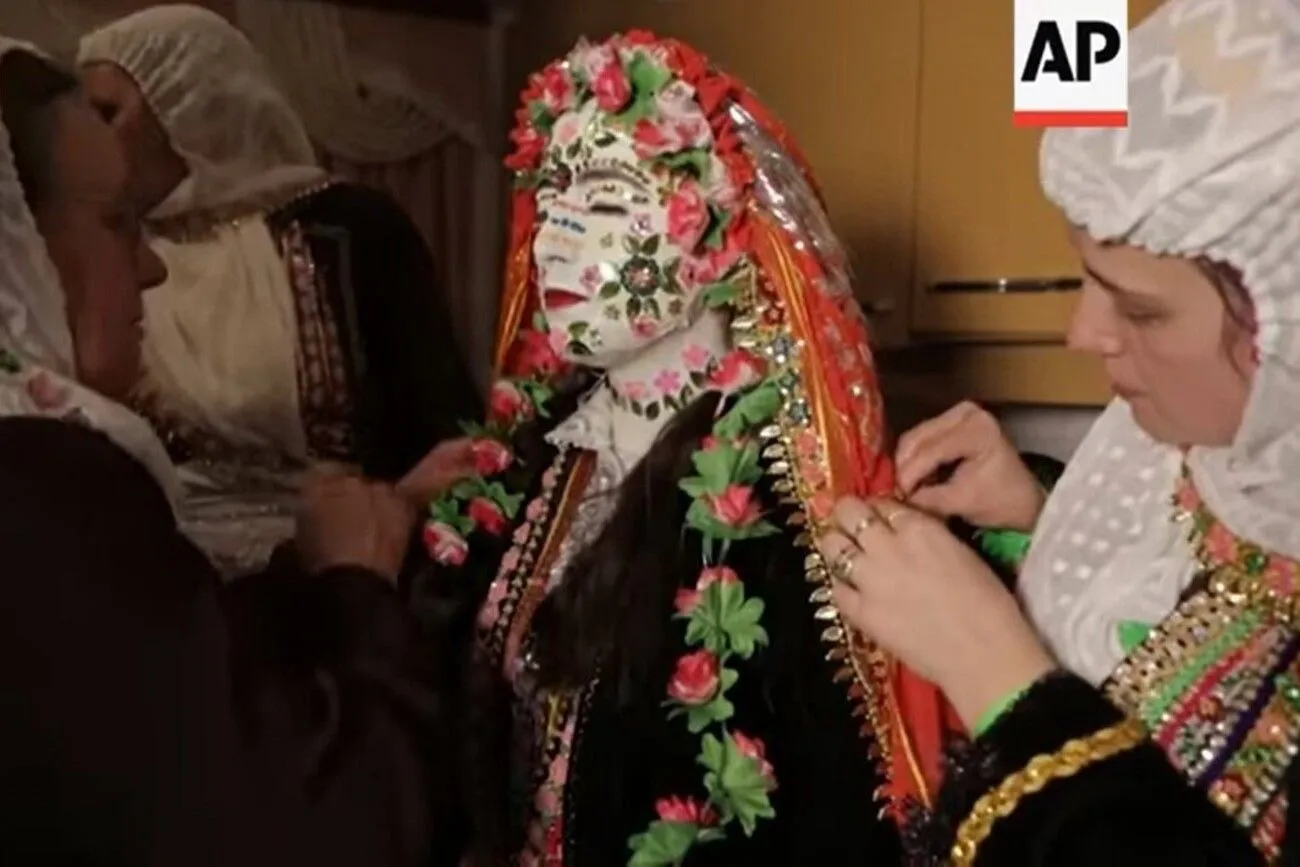 @Unique and colourful marriage ceremony in remote village/AP Archive/YouTube.com
@Unique and colourful marriage ceremony in remote village/AP Archive/YouTube.com